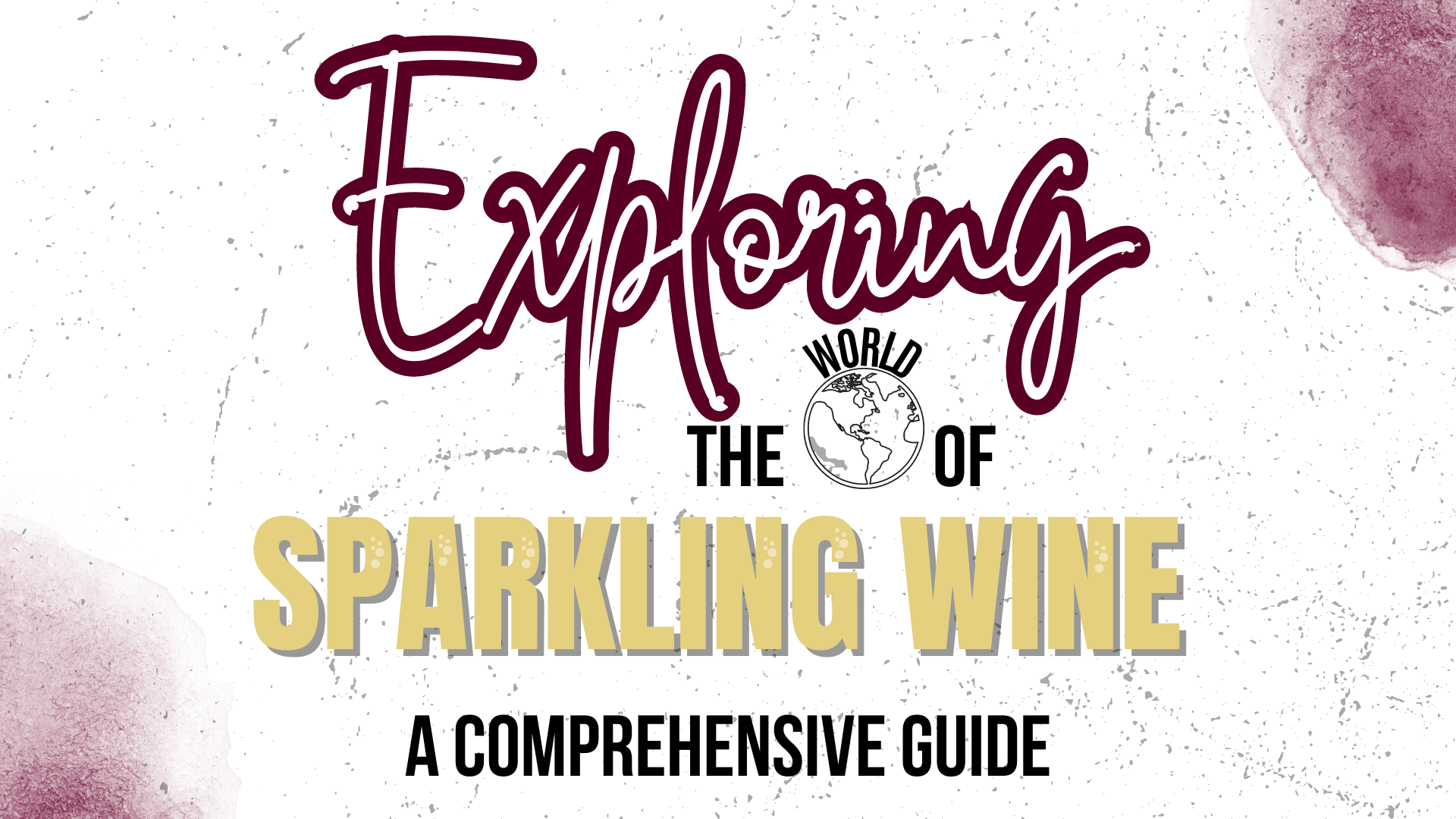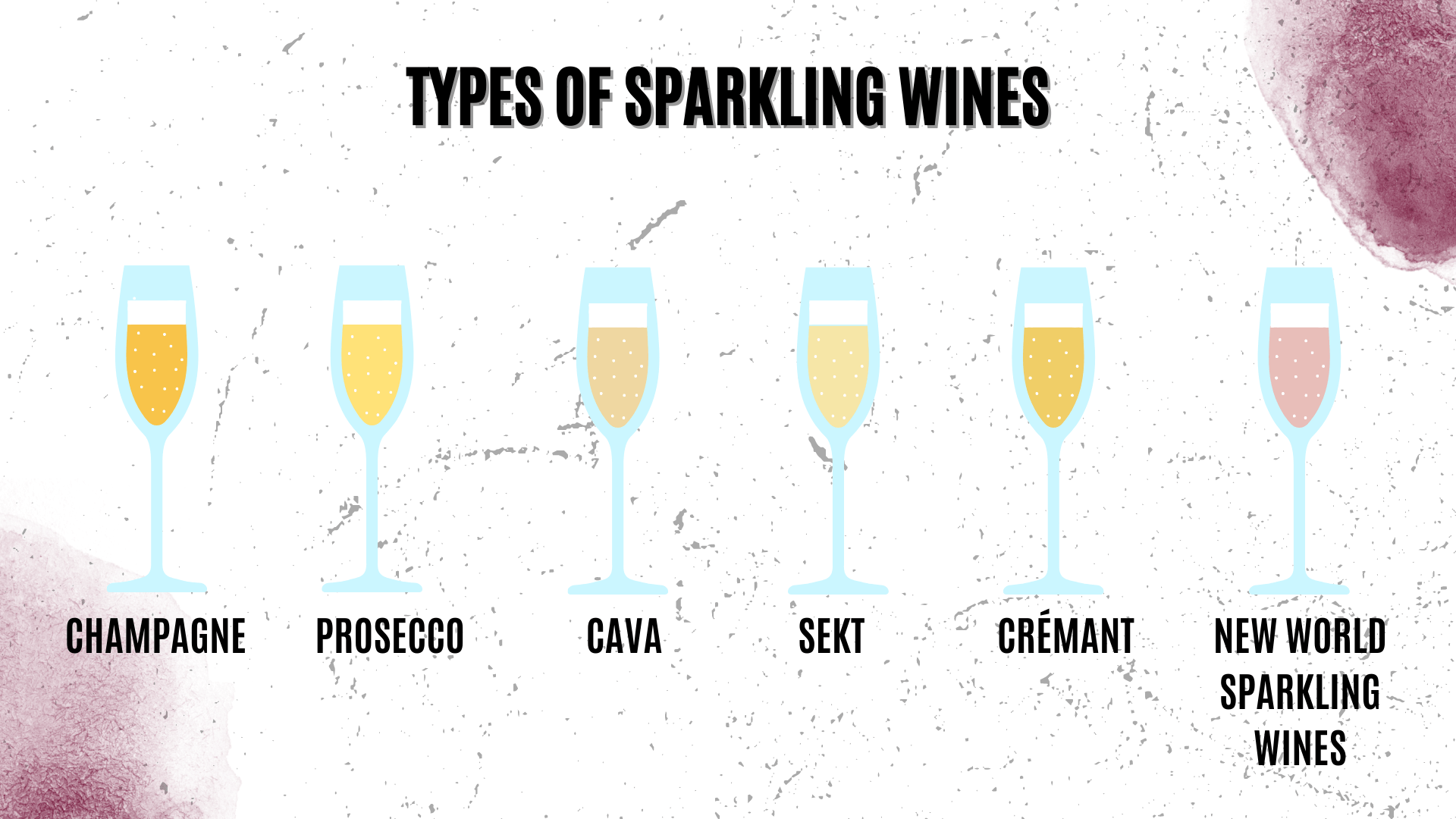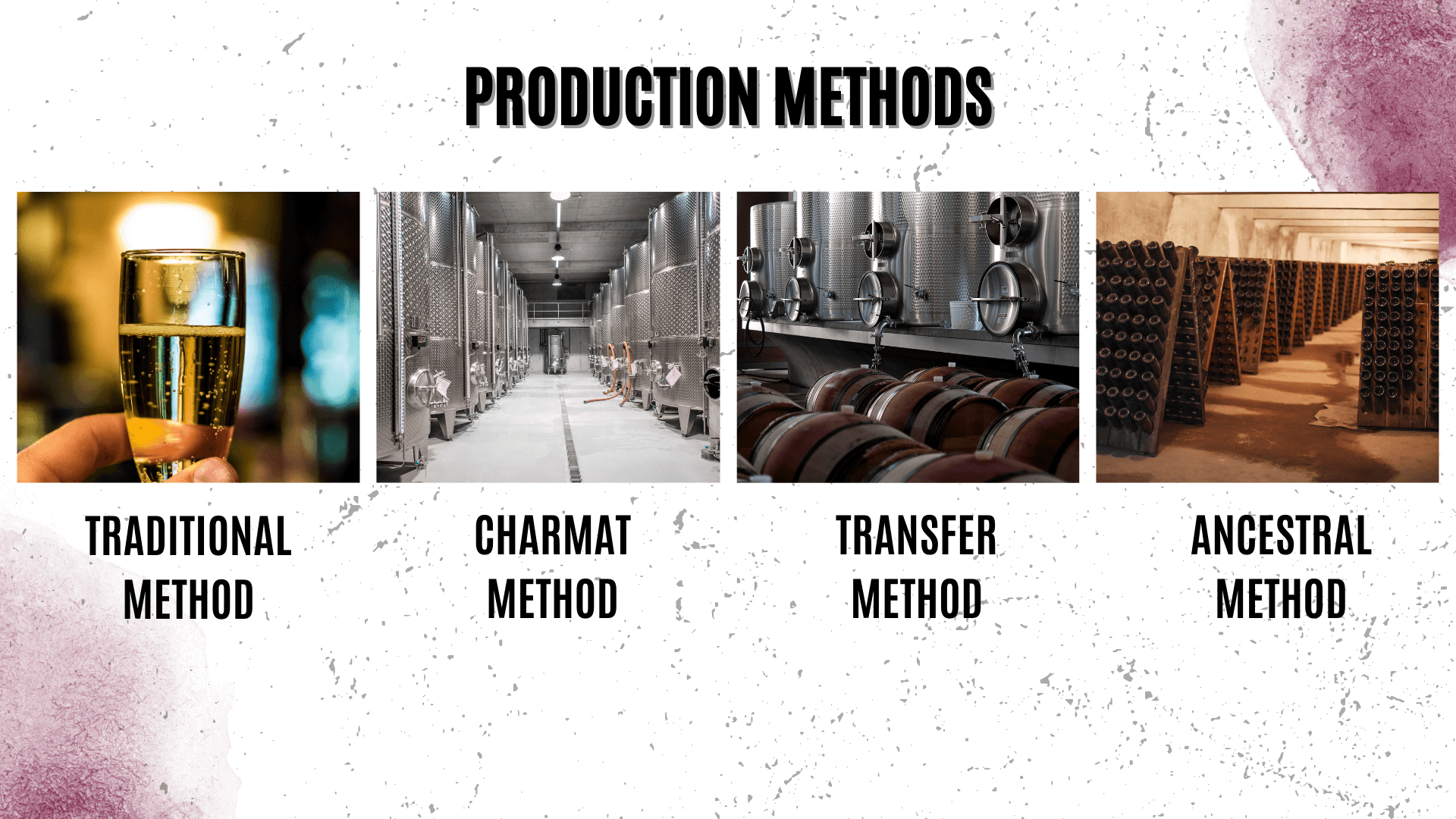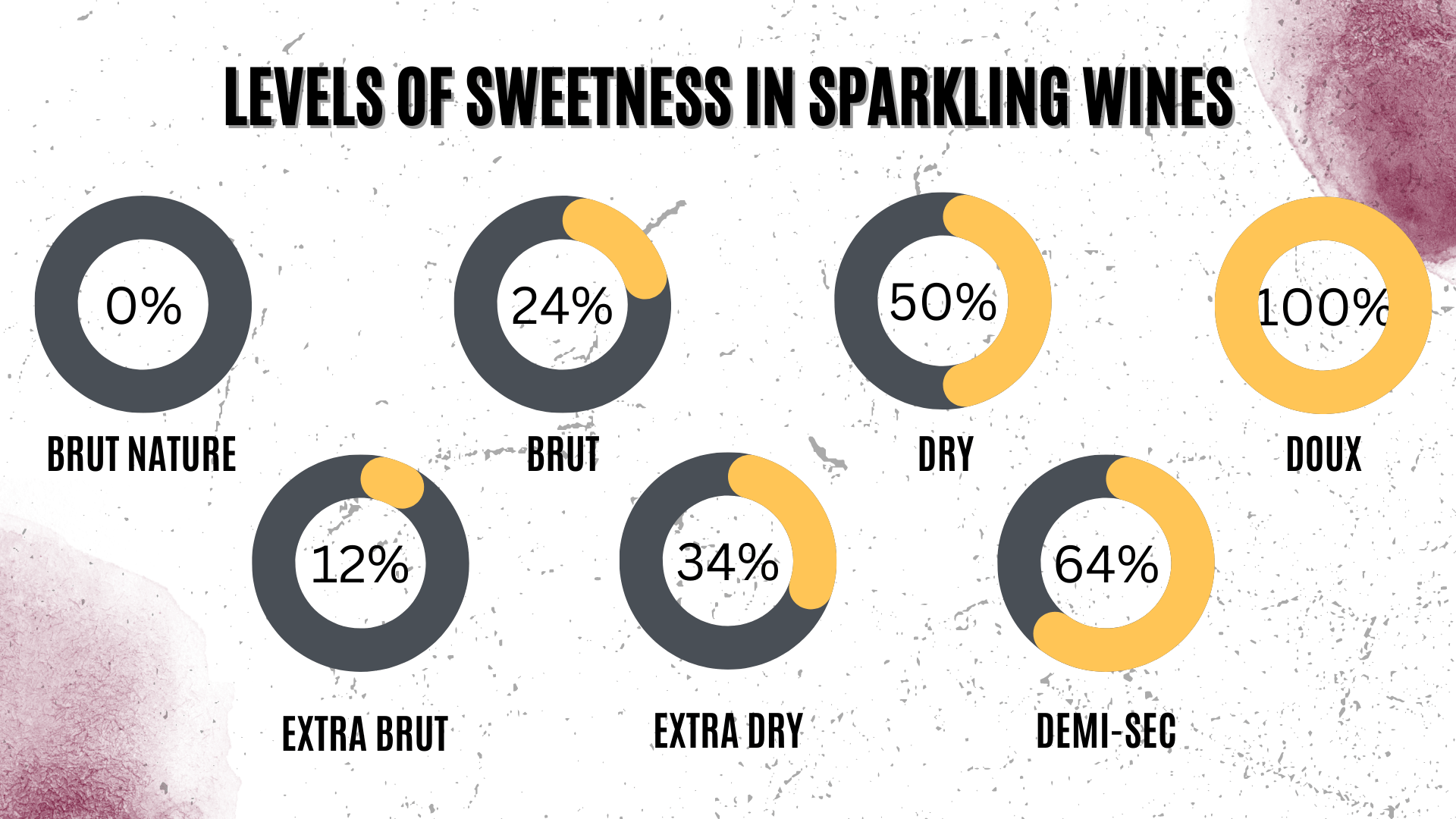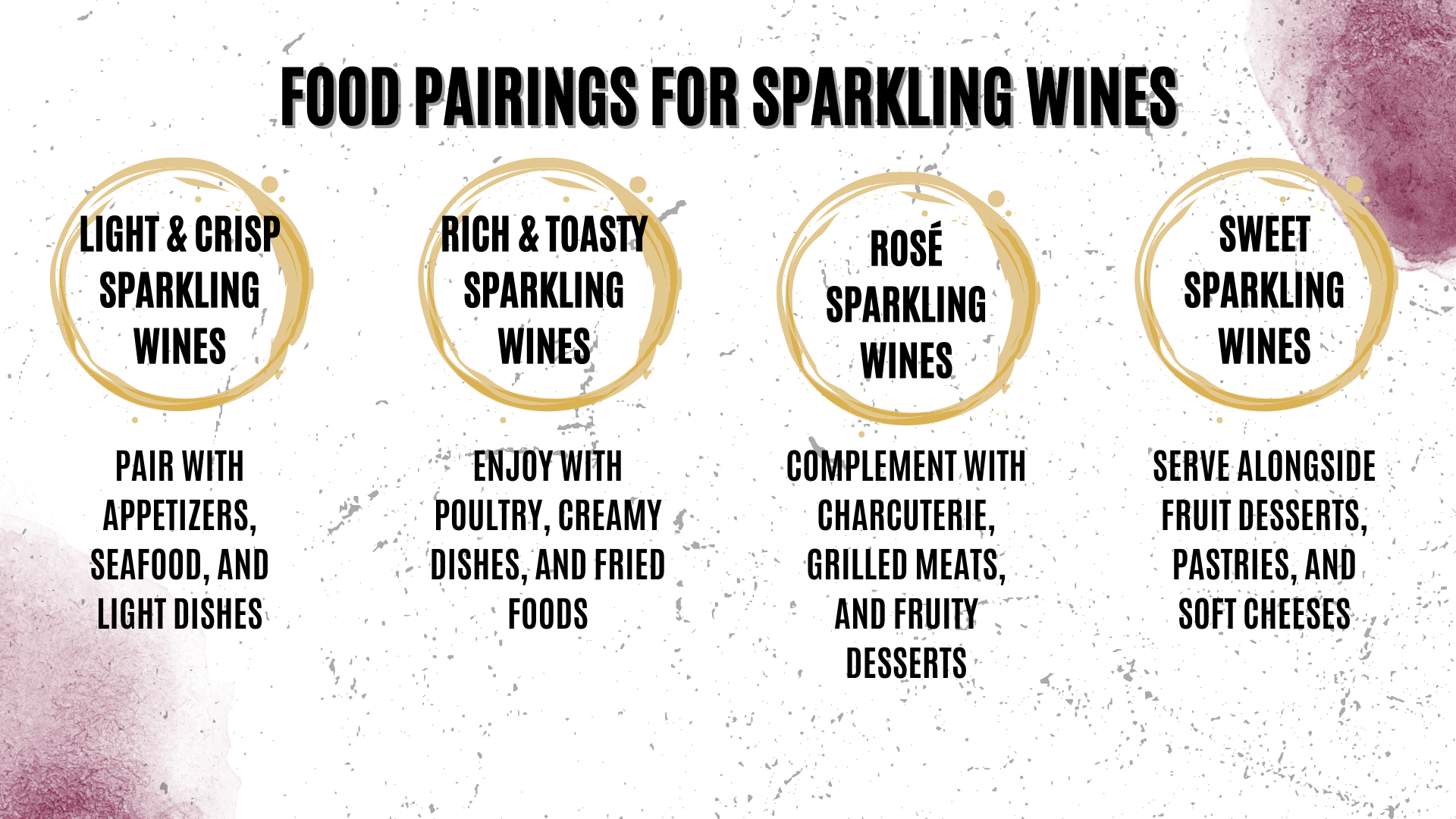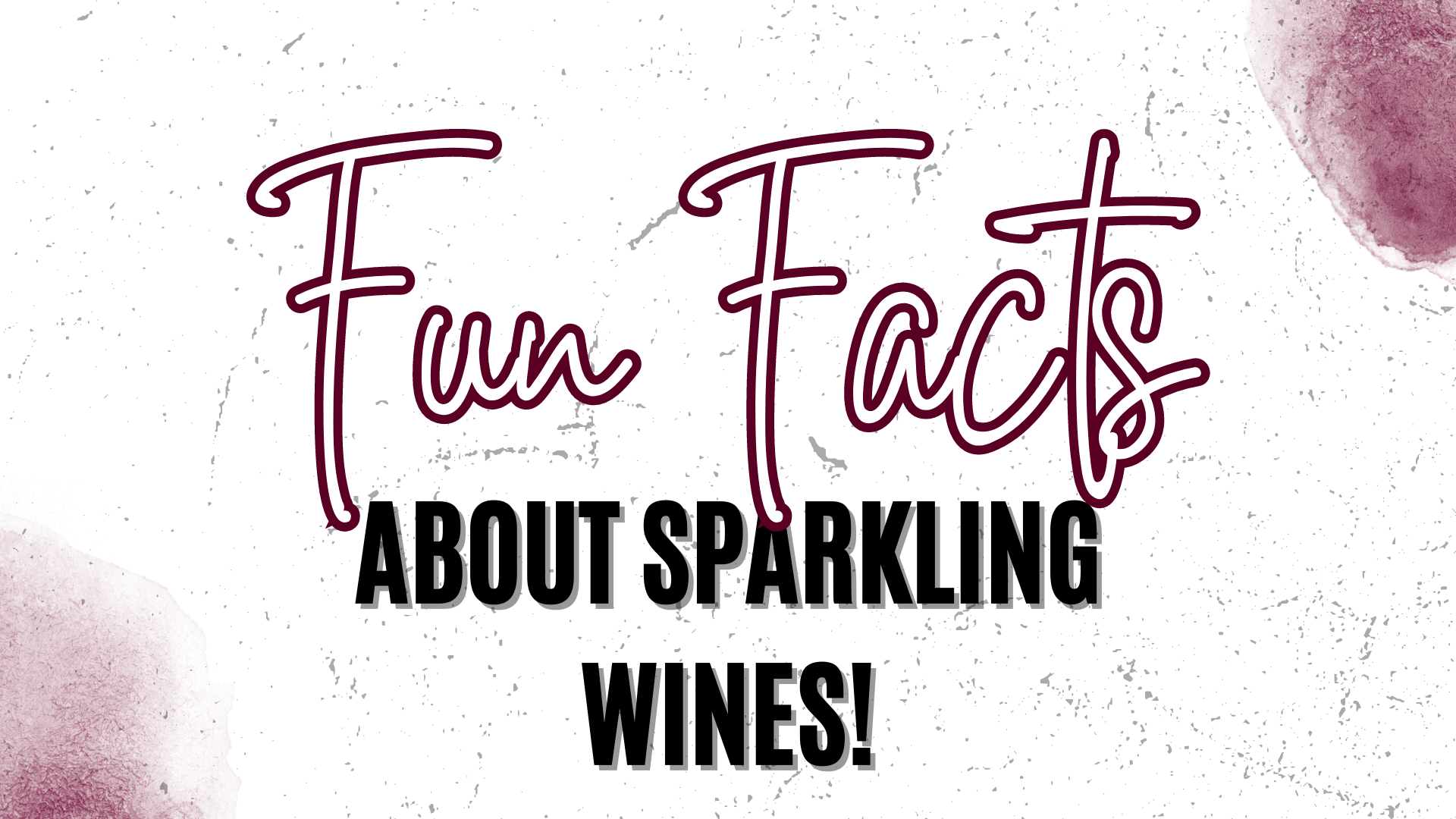Introduction
Sparkling wine, known for its effervescence and lively taste, is a popular choice for celebrations and special occasions. The production process for sparkling wine involves a second fermentation, which creates carbon dioxide and forms the characteristic bubbles. In this guide, we will explore various styles of sparkling wines, their production methods, sweetness levels, and food pairings, along with answering some frequently asked questions.
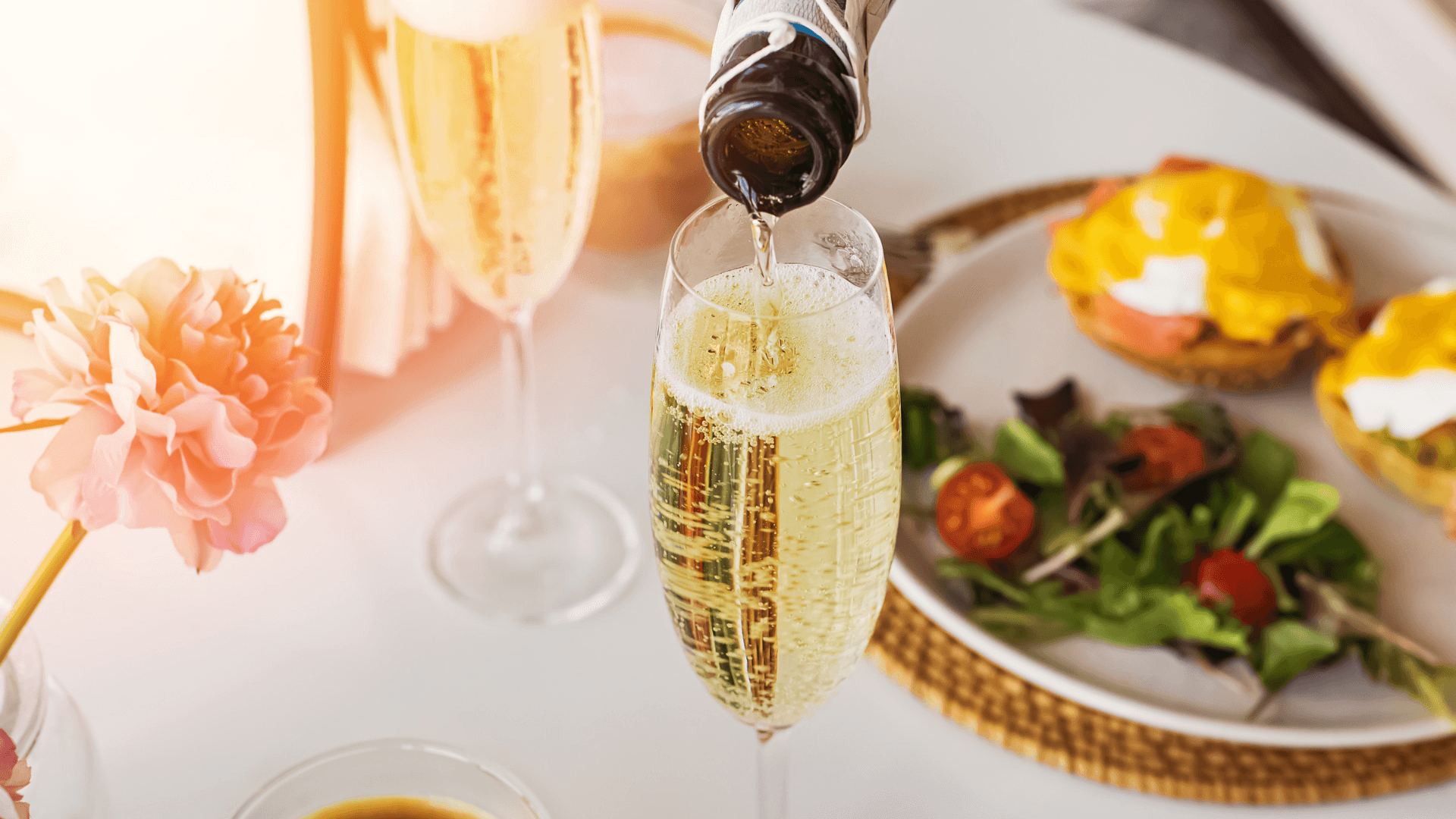
I. History of Sparkling Wines
The origins of sparkling wine can be traced back to the early production methods in Europe, where natural carbonation sometimes occurred due to fermentation in the bottle. The development of Champagne, the most famous sparkling wine, is often attributed to Dom Pérignon, a Benedictine monk. Although he didn’t invent sparkling wine, he significantly contributed to the refinement of the production process.
Over time, sparkling wine production techniques evolved, and various methods were developed. As wine production spread across the globe, so too did the popularity of sparkling wines, with many regions creating their unique interpretations of this effervescent beverage.
II. Types of Sparkling Wines
- Champagne: The epitome of sparkling wines, Champagne is produced in the Champagne region of France using the traditional method. Different types of Champagne include Blanc de Blancs (made from Chardonnay grapes), Blanc de Noirs (made from Pinot Noir and/or Pinot Meunier grapes), and Rosé.
- Prosecco: Hailing from Italy, Prosecco is produced using the Charmat-Martinotti method, which involves a secondary fermentation in pressurized tanks. Prosecco comes in various styles, such as Brut, Extra Dry, and Dry.
- Cava: Spain’s answer to Champagne, Cava is produced using the traditional method with a blend of indigenous grapes. Types of Cava include Cava Brut and Cava Rosado (rosé).
- Sekt: Produced in Germany and Austria, Sekt sparkling wines can be made using various methods. Deutscher Sekt is made from German-grown grapes, while Winzersekt is produced by individual winemakers.
- Crémant: Produced in several French regions outside of Champagne, Crémant sparkling wines use the traditional method. Styles include Crémant d’Alsace and Crémant de Bourgogne.
- New World Sparkling Wines: Countries like the United States, Australia, and South Africa produce their sparkling wines using a combination of traditional and innovative methods, showcasing the diversity and adaptability of sparkling wine production.
III. Production Methods
- Traditional method (Méthode Champenoise) – This process, used for Champagne and many high-quality sparkling wines, involves a second fermentation in the bottle. It produces fine bubbles and complex flavors.
- Charmat method (Tank method) – Primarily used for Prosecco, this method involves a second fermentation in a pressurized tank. It results in larger bubbles and fruitier flavors.
- Transfer method – Similar to the traditional method, but the wine is transferred to a pressurized tank after the second fermentation for filtration and dosage. This method is less labor-intensive and more cost-effective.
- Ancestral method (Méthode Ancestrale) – This ancient technique involves bottling the wine before the first fermentation is complete, resulting in a naturally sparkling wine with a lower alcohol content and unique flavors.
IV. Levels of Sweetness in Sparkling Wine
- Brut Nature/Zero Dosage – No added sugar; very dry.
- Extra Brut – Minimal added sugar; very dry.
- Brut – Slightly sweet; the most common style.
- Extra Dry/Extra Sec – Moderately sweet.
- Dry/Sec – Noticeably sweet.
- Demi-Sec – Sweet, often served with dessert.
- Doux – Very sweet; dessert-style wine.
V. Food Pairings for Sparkling Wines
- Light and crisp sparkling wines – Pair with appetizers, seafood, and light dishes.
- Rich and toasty sparkling wines – Enjoy with poultry, creamy dishes, and fried foods.
- Rosé sparkling wines – Complement with charcuterie, grilled meats, and fruity desserts.
- Sweet sparkling wines – Serve alongside fruit desserts, pastries, and soft cheeses.
VI. Fun Facts about Sparkling Wines
- Sabrage: Sabrage is the art of opening a bottle of sparkling wine using a saber. This dramatic technique was made popular during the Napoleonic era.
- Pressure: The pressure inside a bottle of sparkling wine is typically around 90 psi, which is three times the pressure in a car tire.
- Record-Breaking Bottle: The world’s largest bottle of sparkling wine was produced in Switzerland in 2013, containing 480 liters of sparkling wine.
- Toasting: The tradition of toasting with sparkling wine dates back to the early 18th century, symbolizing friendship and goodwill.
Frequently Asked Questions
Sparkling wines should be served well-chilled, between 40-50°F (4-10°C).
Store sparkling wines in a cool, dark place with a consistent temperature and humidity level, ideally in a wine fridge or cellar. Keep bottles on their sides to prevent the cork from drying out.
Champagne is a specific type of sparkling wine produced in the Champagne region of France using the traditional method. Other sparkling wines, like Prosecco and Cava, are produced in different regions and can be made using different production methods, which may affect their taste and texture.
An opened bottle of sparkling wine can last for 1-3 days if properly sealed with a wine stopper and refrigerated. However, the wine’s effervescence will gradually decrease over time.


